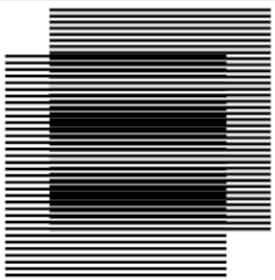Innovative navigation technologies that do not depend on cellular or satellite communication, rely on measuring the acceleration of atoms using cold atom interferometers. Recently, Weizmann Institute scientists have increased the measuring range of these devices a thousandfold
The navigation systems that we all use on a daily basis suffer from a significant limitation: they depend on communication with internet networks or satellites and become worthless when it is disrupted - due to a malfunction, damage, or a natural limitation, such as in the depths of the sea. A solution to this essential challenge may grow with the help of technologies for independent navigation that are in development around the world, and are expected to allow us to know exactly where we are at any moment, without the need for cellular communication or GPS.
A surprising fact is that this "perfect Wise" relies on the measurement of the acceleration of atoms, which can be performed using Cold Atoms Interferometers - powerful and useful measuring devices, which form the basis for a long series of scientific and industrial applications. The scientists of the Weizmann Institute of Science, in collaboration with the Center for Quantum Technologies in Rafael, are contributing powerful new capabilities to this field of research, by perfecting the measurement tools based on cold atoms.
בNew research Led by Chen Abinadav and Dr. Dimitri Yankalev from the research groups of Prof. Nir Dodzon and dr Ofer Furstenberg In the Department of Physics of Complex Systems, the researchers presented a very significant increase - a thousand times - of the range of values that can be measured with the help of interferometers, without impairing the sensitivity and accuracy of the measurement.
Interferometers, i.e. wave interference meters, usually work on light waves: a system of mirrors causes the photon to split into two paths - that is, to be in two different places at the same time (superposition) - and then reconnect in a process known as interference. The interferometer used in the present study works precisely on atoms, i.e. matter waves, which can also split into two parts according to quantum mechanics. With the help of the interferometric sensor, valuable information is revealed about the acceleration of the atoms and the exact size of the gravitational force at the time and place where the measurement is made. This is one of the most accurate ways to measure gravity - a force that is usually extremely difficult to measure due to its weakness in relation to electric and magnetic forces.
To perform the measurement, an additional effort is required - to almost completely stop the random movement of the atoms, by cooling them to a few micro (millionths) Kelvin above absolute zero. The deep cooling is done to reveal the quantum properties of the atom, which are not accessible in hotter objects. For this, a vacuum chamber is used, inside which is a magneto-optical trap. Atoms of rubidium are inserted into the vacuum chamber, a convenient element for working with laser beams, which move freely inside it. When one of the atoms happens to reach the trap, the laser beams cool it, and magnetic fields prevent it from escaping. Hundreds of millions of atoms are collected in the trap every second.

The measurement using cold atom interferometers has to juggle between two limitations: the sensitivity of the measurement, meaning the ability to distinguish minute levels of change in the measured size; and the dynamic range - that is, the range of values that can be measured. Even in everyday contexts, there is always a compromise between dynamic range and measurement sensitivity. For example, human weighing scales will measure in a range of up to 150 kg, but will not detect minute changes of single grams, which will be easily detected by kitchen scales operating in a much smaller measuring range.
The institute's scientists succeeded in perfecting the operation of a cold atom interferometer and overcoming the need for compromise. They achieved this by adding measurements and deciphering the additional information obtained from them, while neutralizing the "noises" that are created during such a process. In a previous study, the researchers were able to make several measurements of the atoms one after the other, with each of them being carried out on a slightly different scale (scale factor). The combination of the various measurements, with the help of a technique known as Moiré, provided new information that made it possible to expand the measurement range. However, in the previous experiment, the large number of measurements and the length of time that passed between them limited the applicability of the method.
The major innovation in the current research was achieved by dividing the atoms into two groups in each run of the experiment, so that two standards are obtained at the same time. In a single operation with this method, the range of the measurement increases tenfold. The researchers were not satisfied with that - and repeated the operation two or three times in a row, each time with slightly different standards. This is how they reached the impressive achievement of increasing the dynamic range by orders of magnitude of a hundred and a thousand times - while minimally affecting the sensitivity of the measurement. In future studies, the institute's scientists plan to try and further refine the measurement method, by using more standards at the same time.
Meanwhile, the scientific and industrial applications of cold atom interferometers are also advancing rapidly - making research in the field particularly useful. These devices have already left the laboratory, and have been operated in cars, airplanes and on ships. In the future it will be possible to use them for independent navigation, for mapping the Earth's gravity field and for searching for natural resources.
More of the topic in Hayadan:
